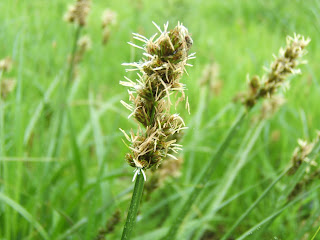Today was not the best of days for a wildlife walk; however, as I had not been on one since August it was a must to get out into the field! I spent about 2 hours from 10:50 walking the footpaths around Emmington. The weather was pleasant to begin with at 15°C with light rain; however, the rain became heavier and the wind stronger by the time I got back to the car.
The following were of note.
Insects:
Hornet (Vespa crabro) – At least three where flying close to Great Covert, with one amongst the sunflowers in a strip planted as game cover.
Fungi:
Three interesting species of fungi were seen during the walk; 2 in Down Covert on tree trunks and one on Ash (Fraxinus excelsior). I am no expert at identifying fungi so I have loaded the following photographs to iSpot (http://www.ispot.org.uk/frontpage) to seek id support from the community. I will update the blog if ids provided.
The iSpot community did not let me down. Two ids provided plus a possible id. See the captions under the relevant photographs for the species identifications.
Pleurotus sp. poss. either P. ostreatus or P. cornucopiae. Need to revisit site to get improved images and images of the stipe. In P. cornucopiae the lamellae run down the stipe and criss-cross over each other to form a distinctive diamond pattern.
Pleurotus sp. poss. either P. ostreatus or P. cornucopiae. Need to revisit site to get improved images and images of the stipe. In P. cornucopiae the lamellae run down the stipe and criss-cross over each other to form a distinctive diamond pattern.
Pholiota adiposa
Pholiota adiposa
Silverleaf Fungus (Chondrostereum purpureum) on Ash (Fraxinus excelsior)
Flora:
The following were in flower:
• White Dead-nettle (Lamium album);
• Red Clover (Trifolium pretense);
• Common Field Speedwell (Veronica persica);
• 2 species of Umbelliferae.
Birds:
• House martin (Delichon urbica) – small flocks;
• Swallow (Hirundo rustica) - small flocks;
• Buzzard (Buteo buteo) – at least 3 with one harassed by corvids;
• Red kite (Milvus milvus) – 6+;
• Kestrel (Falco tinnunculus) – 2;
• Skylark (Alauda arvensis) – calling from recently drilled fields;
• Chiffchaff (Phylloscopus collybita) – 2 calling;
• Stock dove (Columba oenas) – possible the largest flock I have ever seen; 30+ individuals.
Mammals:
• 1 Brown hare (Lepus europaeus);
• Grey squirrel (Sciurus carolinensis) – evidence that they are feeding on maze hobs picked from the strips sown as game cover. Feeding stations found in Down Covert.
























+-+August+15th+2010+002.jpg)
+-+August+15th+2010+003.jpg)

























